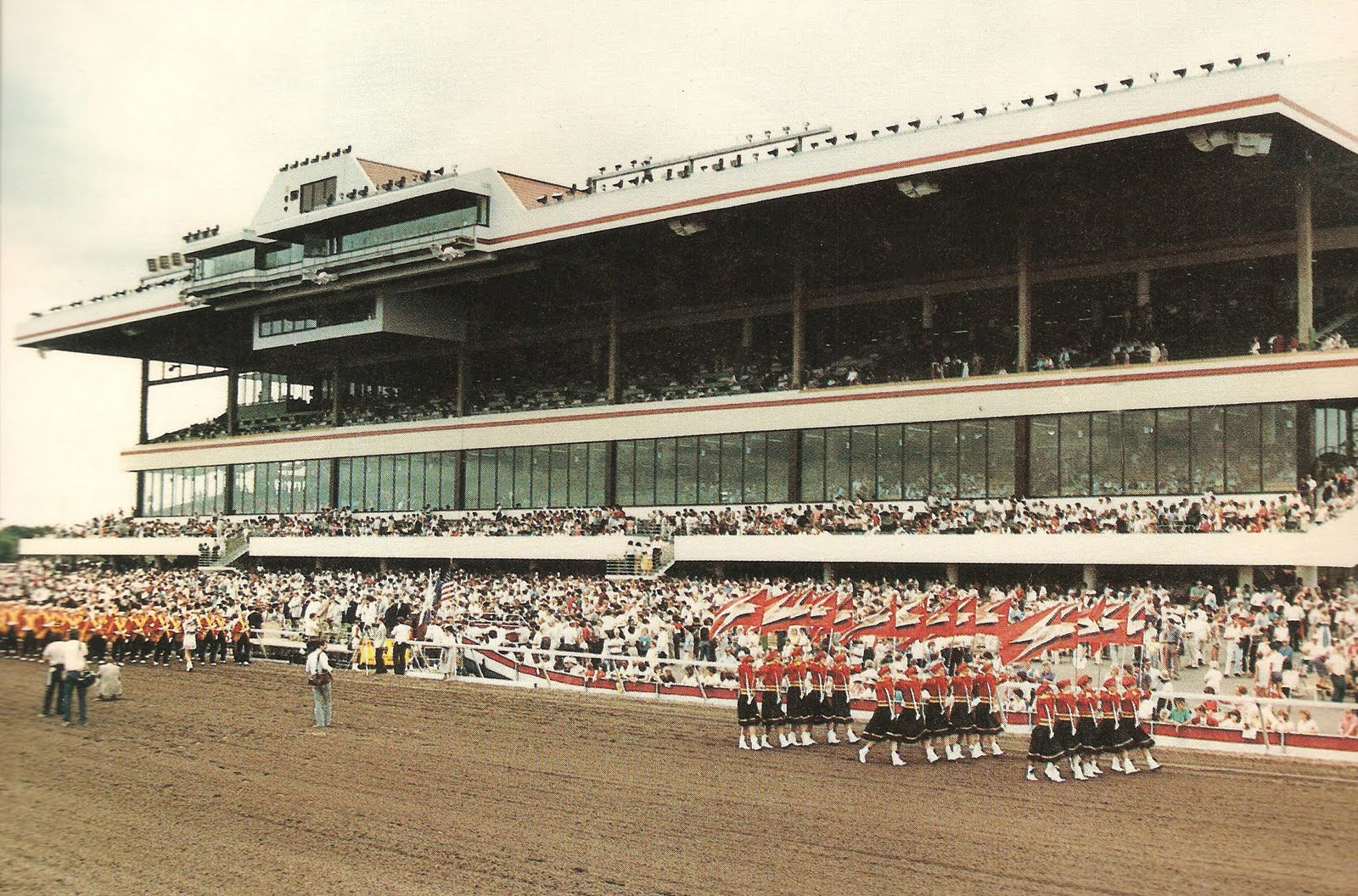By Jim Wells
No one was certain what to expect when pari-mutuel racing arrived in Minnesota a quarter century ago. 
Supporters predicted horse farms would sprout like corn stalks from the fertile Minnesota countryside, creating jobs in the feed, veterinary, shipping and tack businesses with ever-expanding revenues and taxes for the state’s coffers.
Naysayers and anti-gambling lobbyists predicted a decline in the state’s theretofore “pristine” Upper Midwest values and ethics and a general descent into lawlessness.
What actually occurred was a joyous response to legalized wagering and the new addition to the Twin Cities sports scene when Canterbury Downs opened its doors in Shakopee 25 years ago this June.
What actually occurred was a joyous response to legalized wagering and the new addition to the Twin Cities sports scene when Canterbury Downs opened its doors in Shakopee 25 years ago this June.
Large crowds — 15,000 was common and several exceeded 20,000 — greeted the new sport in town with a passion. Wagering was cautious and started slowly (per capita the first season was $77.08) as new patrons learned the game, but enthusiasm for the sport was clear.
Canterbury Park, the successor to the Downs, will celebrate the 25th anniversary of racing’s arrival in Minnesota throughout the upcoming 62-day race meet, May 14 through Aug. 29.
The track will offer free admission throughout the meet, once again highlighted by the $500,000 Claiming Crown and the $100,000 Lady Canterbury Breeders’ Cup Stakes on July 24.
Canterbury Park, the successor to the Downs, will celebrate the 25th anniversary of racing’s arrival in Minnesota throughout the upcoming 62-day race meet, May 14 through Aug. 29.
The track will offer free admission throughout the meet, once again highlighted by the $500,000 Claiming Crown and the $100,000 Lady Canterbury Breeders’ Cup Stakes on July 24.
“It’s hard to believe that it’s been 25 years,” said Randy Sampson, Canterbury’s president and CEO, “Except when you look at pictures of all of us back then.”
Canterbury’s two most successful promotions again are planned — the July 3 fireworks show attracts crowds of 15,000 or more; Extreme Race Day, Aug. 9, annually draws crowds approaching 20,000. Purses will average around $127,000 a day, much the same as last summer.
Brooks Fields was president and CEO of Canterbury Downs when it opened in 1985. Brooks Hauser, his nephew, was senior vice president and treasurer. Santa Anita Park’s Robert Strub and Royce McKinley were on the Shakopee track’s board of directors. The racing department was run by former Santa Anita racing director Lou Eilken with his protégé Tom Knust as racing secretary.
Those ties to Southern California racing drew many of the top trainers and their horses on the West Coast to Shakopee for stakes races the first few years– Charlie Whittingham, Bobby Frankel, Ron McAnally D. Wayne Lukas, Richard Cross and Neil Drysdale among them.
Track management was frequently surprised by attendance numbers in 1985, including a crowd of 25,596 fans on Sept. 1. An average 13,163 fans wagered more than $1 million a day for the 83-day meet. Management responded with improvements totaling $8 million for the 1986 season, including an expansion to the second level of the grandstand and with new barns on the backside.
Track management was frequently surprised by attendance numbers in 1985, including a crowd of 25,596 fans on Sept. 1. An average 13,163 fans wagered more than $1 million a day for the 83-day meet. Management responded with improvements totaling $8 million for the 1986 season, including an expansion to the second level of the grandstand and with new barns on the backside.
The barns were filled to capacity those first two seasons with horses from some of the top stables in the country. Jack Van Berg, Lukas, Bill Mott, Rusty Arnold, Jenks Fires, Carl Nafzger, Bernie Flint, Kathy Hutchinson and Chuck Taliaferro were among the trainers who had strings at Canterbury.
Sandy Hawley, Mike Smith and Ron Hansen were among the riders in the local jockey colony who already had or would develop national identities. Bill Shoemaker, Laffit Pincay, Jr., Alex Solis, Pat Day, Craig Perret, Pat Valenzuela and Chris McCarron made periodic appearances in stakes races.
The intervening years brought new competition and changes to the racing landscape. The arrival of the state lottery and Indian casino gaming cut deeply into Canterbury’s original hold on wagering and was a primary factor in the near death of racing in Minnesota. After a robust and promising first two seasons, attendance began to decline, wagering continued a freefall and Canterbury Downs, then owned by Ladbroke Racing Corp., went dark after the 1992 race meet.
“Back then, I’d say we would have been real happy to think that we’d still have racing in 2010,” Randy Sampson said.”It just wouldn’t have seemed possible.”
“Back then, I’d say we would have been real happy to think that we’d still have racing in 2010,” Randy Sampson said.”It just wouldn’t have seemed possible.”
Rescued in 1994 by the Sampson family, the track resumed racing in 1995, acquired a new name, Canterbury Park, and has continued to run meets each spring and summer since.
Sampson agrees with the notion that the successful debut of the Festival of Racing in 1992, conducted entirely by Minnesota horsemen, was largely responsible for keeping the resolve alive to find a way to restore racing to the Minnesota scene three years later.
Sampson agrees with the notion that the successful debut of the Festival of Racing in 1992, conducted entirely by Minnesota horsemen, was largely responsible for keeping the resolve alive to find a way to restore racing to the Minnesota scene three years later.
“Absolutely,” he said, “In spite of Ladbroke — they were almost hoping we’d fail– a great group of people came together to put the Festival together.”
Now, the track is prepared to celebrate the start of racing in the state in a most natural way– with the continuation of racing this spring and summer.